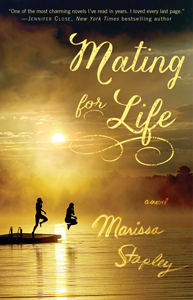Mothers and sisters
Marissa Stapley’s debut novel examines the complex relationships between women
Share
MATING FOR LIFE
Marissa Stapley
Stapley’s debut novel opens with a young woman named Liane encountering a snapping turtle while swimming in a lake in Muskoka, Ont. She has come up to her mother’s cottage for a few days of solitude, hoping to get some work done on her graduate thesis, but, mostly, spends the time wandering around the house, parsing her feelings for Adam, who, a few weeks earlier, told her, “We should probably get married.” Just before her mother and sisters arrive for the family’s annual weekend together, Liane finds an engagement ring lying on a bookshelf. She assumes it belongs to a cottage visitor, since her mother is not the marrying kind—she had three daughters with three different men and never tied the knot. Liane slips the ring on her finger, where it promptly becomes stuck. Which helps her decide what to do about Adam . . .
Each subsequent chapter is narrated by one of a rotation of women—Liane’s older sisters, Fiona and Ilsa; her mother, Helen; Myra, a woman who works at the marina near the family’s cottage; and Samira, daughter of Fiona’s husband from a previous relationship. Each moves the plot a little, while providing further insight into the women’s relationships with each other. For example, through Liane, we learn about Ilsa’s benevolence; through Fiona, we see her recklessness. Ilsa, the middle sister, reveals herself to be the most complex of the girls: Like Helen, she is an artist, a free spirit and struggles to settle down with one man. But she also longs for a conventional life, for love and security.
Stapley started writing the book as a collection of short stories, and some chapters stand up quite well on their own—in particular, those told from Myra’s perspective, who left a job on Toronto’s Bay Street for country life with a middle-aged man raising three sons on his own. Myra’s efforts to adapt to rural life and to force a relationship with a partner to whom she is ill-suited, her fear that she is a “dry doe”—a term she hears used by hunters to describe female deers that don’t give birth—feel fresh and true-to-life. Taken together, the women’s narratives offer an absorbing and entertaining meditation on romantic love, but, even more so, on the nature of motherhood and sisterhood.
